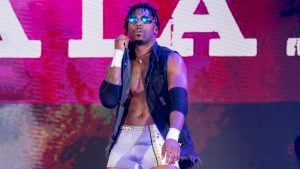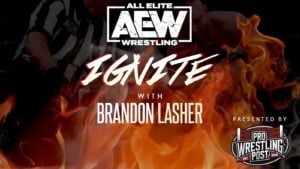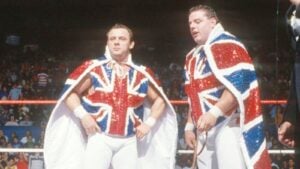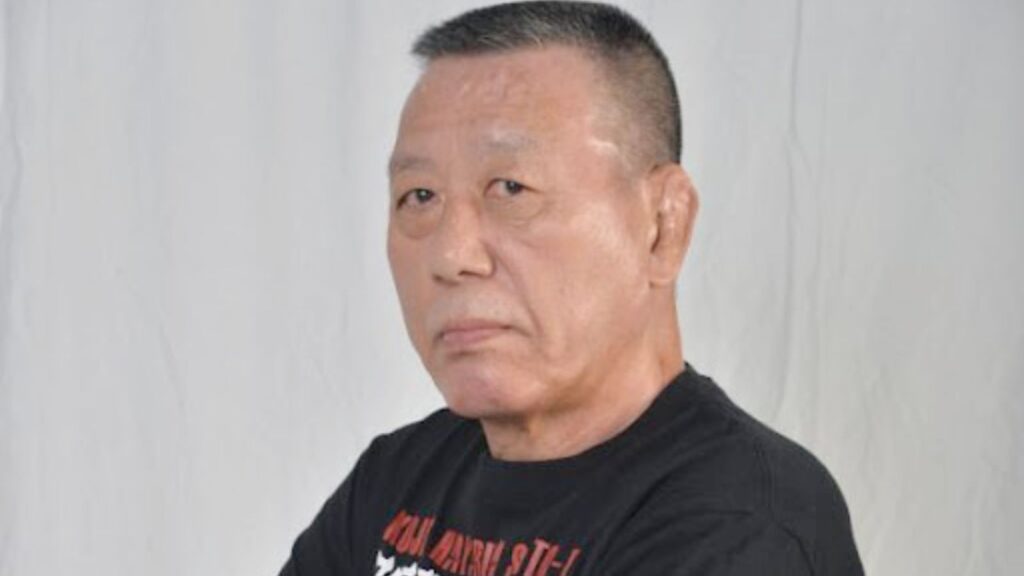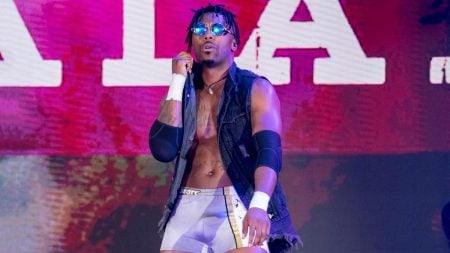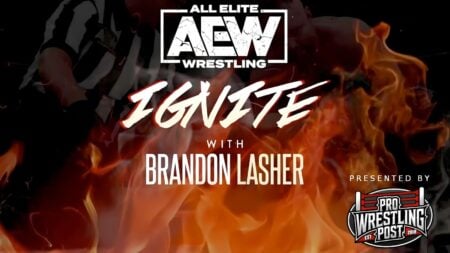While you cannot judge every professional wrestler by the person that trained them, one might expect someone trained by the father of puroresu in Japan, Rikidōzan.
To follow in his footsteps and become an icon of puroresu themselves. Yet, The Great Kojika’s path to becoming an icon was not so straightforward.
The Great Kojika founded a home for deathmatch wrestling to flourish in 1995 when he became a co-founder of Big Japan Pro Wrestling, despite a wealth of knowledge in a completely different style of pro wrestling.
His knowledge has led to Big Japan Pro Wrestling becoming one of Japan’s premiere promotions and has enabled Kojika to call himself the world’s oldest active professional wrestler.
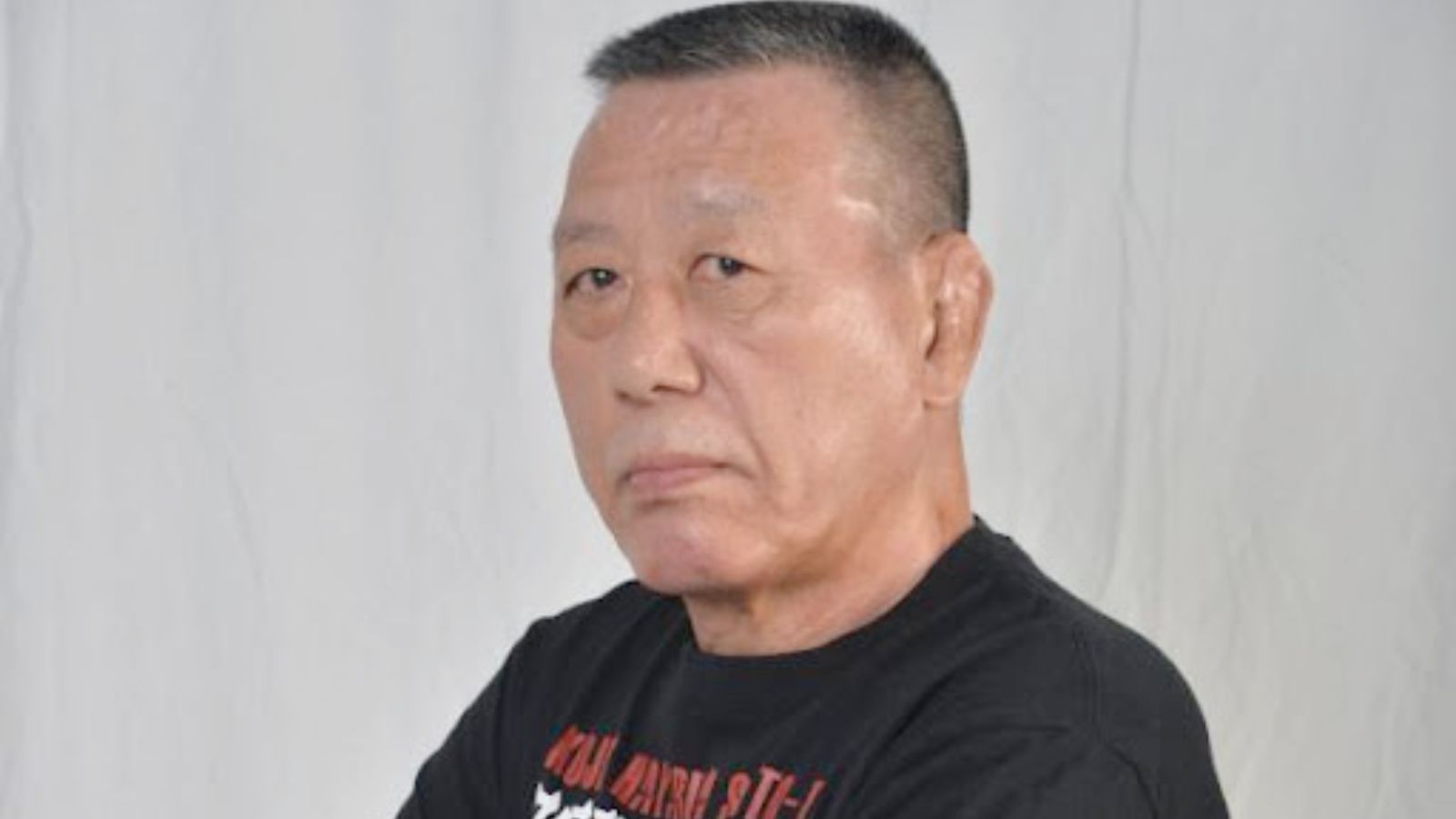
The Great Kojika – Thunder Kojika
Shinya Kojika, who goes by The Great Kojika in the ring, made his professional wrestling bow in 1963 under the banner of the foremost Japanese professional wrestling promotion at the time – the Japan Wrestling Association (JWA).
The JWA was founded by Rikidōzan, the founding father of Japanese professional wrestling, who was also the man who started The Great Kojika’s professional wrestling journey.
As the last disciple of Rikidōzan prior to the legend’s death in 1963, The Great Kojika had a lot to live up to, and the promotion had high hopes for the living legacy of their founder.
Like all prospects starting out in the JWA and many other promotions continuing into the present day, The Great Kojika was a complete rookie.
This meant that the first few years of his career were spent working short matches, coming out on the losing end and gaining the valuable experience needed to be a potential main-eventer in the years to come.
His debut was against Shingo Harai at the City Gymnasium in Hamamatsu, Shizuoka towards the end of the JWA’s December International Championship Series.
Kojika wrestled as Shinja Kojika that day and he was defeated in just over eight minutes. Kojika would also compete as Raizo Kojika during this time, with Raizo roughly translating to Thunder.
Kojika would pick up a few more wins than most rookies but he would still be sent over to the United States in order to gain more experience.
In October of 1967, due to the JWA’s involvement with the National Wrestling Alliance (NWA) in the United States, the JWA would tour the US for joint shows with one of the NWA’s territories, NWA Mid-America in Tennessee.
This would be where fans in the US would be introduced to Kojika and other members of the JWA roster set to start their excursions across the country.
Throughout the tour, Kojika would team with Motoshi Okuma, another JWA prospect who would go on to be trained by Giant Baba.
These two would make quite the pairing as their time in the United States progressed, and they would be known as ‘The Rising Suns’ whenever they teamed together.
The Rising Suns would capture the NWA World Tag Team Championships while on the tour, even defending the belts in a match that featured bullwire and two referees.
The duo would then spend the majority of their time on excursion together in Atlanta, Georgia with Georgia Championship Wrestling.
Motoshi Okuma’s excursion would be much shorter than Kojika’s, only lasting until August of 1968, meaning that The Rising Suns would eventually have to disband, which they did after losing a handicap match to Louie Tillet on Okuma’s final appearance for the US promotion.
From then on, Kojika would work singles matches and team with talent already in feuds of their own until he was moved from Georgia Championship Wrestling over to Big Time Wrestling, based out of Detroit, Michigan.
In Big Time Wrestling he would briefly team with future, multi-time NWA North American Tag Team champion Seiji Sakaguchi before taking part in Central States Wrestling’s tournament for the NWA North American Tag Team Championships where he would team with Tarzan Tyler and reach the finals, only to lose to Luke Brown and Danny Little Bear.
Kojika in Hollywood
It’s not uncommon for talent on excursion in another country to be kept far away from the title scene, given that they would not be there for the long term.
However, Kojika being a main feature of the NWA tag team scene showed that the NWA had faith in his abilities and they would continue to push Kojika when they moved him to their Hollywood branch where the NWA’s greatest stars competed.
In one of the first matches that Kojika worked for NWA Hollywood, he faced off against Terry Funk.
Funk had already started on his journey to becoming a hardcore icon, having worked a number of hardcore style matches for the NWA in the years prior to Kojika’s arrival.
The pair would meet a number of times over their careers, and Kojika no doubt held Terry Funk in as high a regard as every professional wrestler who worked the style did.
Also early in Kojika’s NWA Hollywood run would come his first title reign when he defeated Pepper Martin in October 1969 for the NWA Pacific Coast Brass Knuckles Championship.
The match was contested under hardcore rules due to the nature of the title contested. There arguably wasn’t a more fitting title available at the time to be Kojika’s first and it set a precedent for the future.
Gold was in Kojika’s sights more often than not that year. Two weeks after his title victory, Kojika would face Mil Mascaras for the NWA Americas Heavyweight Championship.
Then face Mascaras (and Mascaras’ tag team partner Rocky Johnson) again shortly after when he teamed with Don Carson in a match for the NWA Americas Tag Team Championships.
Kojika would be on the losing end both times, and then he would lose his own title to El Medico a month after winning it.
Even with three title match losses in a row, Kojika would defeat Pepper Martin again, this time for the NWA Beat The Champ Television Championship.
His rivalry against Pepper Martin spanned three separate championship matches, yet it was his rivalry with Mil Mascaras that birthed the highlight of Kojika’s time in NWA Hollywood.
Come December, Kojika had gained a reputation for getting disqualified in matches for using various weapons, he just couldn’t help himself.
This led him to face mega-face Mil Mascaras in a match where Kojika couldn’t get a hold of any weapons but also couldn’t be disqualified – a steel cage match. Mil Mascaras defended his championship in the match but would ultimately be defeated by Kojika in a shock result.
Rocky Johnson would defeat Kojika for the title at the turn of the new year, though Kojika had found himself a niche.
If he could beat a star like Mil Mascaras inside of a cage, then he could theoretically beat anyone inside of one. This proved true for a time, as he defeated El Medico for the NWA Pacific Coast Heavyweight Championship inside of a cage.
Unfortunately, this gimmick would not last long as he was defeated in his speciality match by Pantera Negra, who would defeat him more times than most others would during this period.
With all his success in the United States, the time for Kojika to return home was nearing. He would compete for titles that he used to hold a few more times towards the end of his time in NWA Hollywood and would depart in September 1970.
The Rising Sun Returns Home
Kojika had far surpassed the man he was the last time he set foot in a Japanese wrestling ring by the time he returned to the JWA.
Rocky Johnson fell to Kojika before the latter entered into JWA’s 1971 World League where he would care less about winning and more about taking a weapon to his opponent before going to war with fellow hardcore enthusiast Abdullah The Butcher.
After that he became an All Asia Tag Team champion with Mr. Matsuoka just before a monumental shift in the structure of Japanese professional wrestling occurred.
The two biggest stars of the JWA, Giant Baba and Antonio Inoki, departed from the JWA towards the end of 1971 and go on to form their own promotions.
Giant Baba formed All Japan Pro Wrestling while Antonio Inoki formed New Japan Pro Wrestling.
The JWA did not survive long without their stars and folded half way through 1973, leaving those who competed for them, including The Great Kojika, with a decision to make.
For The Great Kojika, the decision was simple. Many of those he had shared the ring with in the past, such as Motoshi Okuma and Terry Funk, had chosen All Japan Pro Wrestling and he would join them.
This decision would also allow him to return to the United States for a time to compete in more hardcore style matches that All Japan didn’t necessarily advertise much of on their regular tours.
He would also be able to once again team regularly with his old Rising Suns teammate Motoshi Okuma and team with the founder of All Japan himself, Giant Baba.
Kojika and Okuma had multiple runs with the All Asia Tag Team Championships, which had become a feature in All Japan since the closure of the JWA, which would define their careers as established tag team wrestlers in the promotion.
In 1986, The Great Kojika would formally retire from active competition for the first time, twenty-three years after his debut.
If that were to be the last time Kojika laced up his boots, he likely would have been remembered as an exceptional tag team specialist with an affinity for violence, but that was not to be the case.
A Big Return
In 1995, Kojika joined forces with Kazuo Sakurada to form a brand new promotion, Big Japan Pro Wrestling (BJW).
The aim of BJW was to provide an ensemble for fans who wanted to see both puroresu and deathmatches on the same card, which is exactly what they offered from the outset.
Kojika himself even jumped back into action for his new promotion at the age of fifty-three when he faced Tarzan Goto at the BJW Founding Series in his first match in nine years.
The match itself was crossed between a street fight and a deathmatch, yet it ended in just under three minutes with Tarzan Goto as the winner.
Kojika followed up with a number of other three minute deathmatches where he defeated Mitsunobu Kikuzawa twice in three separate bouts.
While the majority of his matches were much shorter due to his age, that fact did not stop him from making appearances at promotions that BJW had a good relationship with.
Genichiro Tenryu’s WaR promotion was visited by Kojika who brought Shoji Nakamaki with him to face Gedo and Jado.
Meanwhile, at BJW’s first major crossover event with New Japan Pro Wrestling at the Tokyo Dome in 1997, Kojika was defeated by Masa Saito in a match where former New Japan star Kotetsu Yamamoto was the special guest referee.
The matches that Kojika competed in gradually increased in length as time went by, though Kojika decided against putting himself at the forefront of the promotion as he knew full well what a good group of talent he had at his disposal.
Most of which were willing to take heinous risks to get the fans on side. This of course is not to say that Kojika didn’t take these risks himself as he was more than happy to be wrapped up in barbed wire and dunked into a casket full of dry ice.
By 2006, Kojika increased his schedule to include appearances at various independent shows around Japan, and by 2009, he had started to appear for Takashi Sasaki’s new deathmatch promotion, Pro Wrestling FREEDOMS.
2009 also saw Kojika lead BJW into a special New Year’s Eve event with KAIENTAI DOJO and DDT Pro Wrestling.
A run with the eight-year-old Mr. 6 and the twelve-year-old Riho at the Unified Trios Championships (UWA World Trios, Jiyugaoka Six-Person Tag Team, and Nihonkai Six Man Tag Team Championships) in DDT followed on from this, which was visually a strange combination of stars.
Kojika continued on through the years, with at some stages having weekly matches across his own promotion and FREEDOMS.
Even Zero1 and Genichiro Tenryu’s Tenryu Project saw Kojika in action all the way up until 2017 where Kojika scaled back his appearances for other promotions to maximise what he could do in the ring for his own.
2017 also marked the year that Kojika returned to All Japan Pro Wrestling for the first time since his original retirement in 1986.
He and other members of the Big Japan Pro Wrestling roster teamed with and against Kojika’s fellow veterans Masanobu Fuchi and Takao Omori during the Rasing An Army Memorial Series.

From then on, Kojika continued to make sparing appearances for BJW and other promotions as and when able to do so.
Even in 2024, the Great Kojika stepped foot into the ring as he had done every year since he started BJW, with his first outing of the year being for All Japan in a ‘Three Current Bats Blast Deathmatch’, which involved exploding barbed wire bats.
Here, he teamed with Raijin Yaguchi and Atsushi Onita to defeat Mr. Pogo, Onryo, and Takumi Sakurai.
A Worthy Last Disciple
As of 2024, The Great Kojika laces up his boots at the age of eighty-two, something that no other professional wrestler can claim to do regularly like Kojika.
With over sixty years of professional wrestling experience, Kojika has seen countless eras come and go but would never let one of them pass by without him.
Retirement wasn’t the end of Kojika’s story with professional wrestling in the eighties and for his story to continue well into the start of the 21st century serves as inspiration for any professional wrestlers who feel that their career hasn’t necessarily gone as desired.
After all, Kojika only started up BJW at the age of fifty-three, which is where many fans around the world started to hear of his name.
The Great Kojika’s mentor Rikidōzan brought something different to Japan when he started the JWA back in 1953 and it’s fair to say all these years later that his last disciple has done the same, only using a slightly different method.
